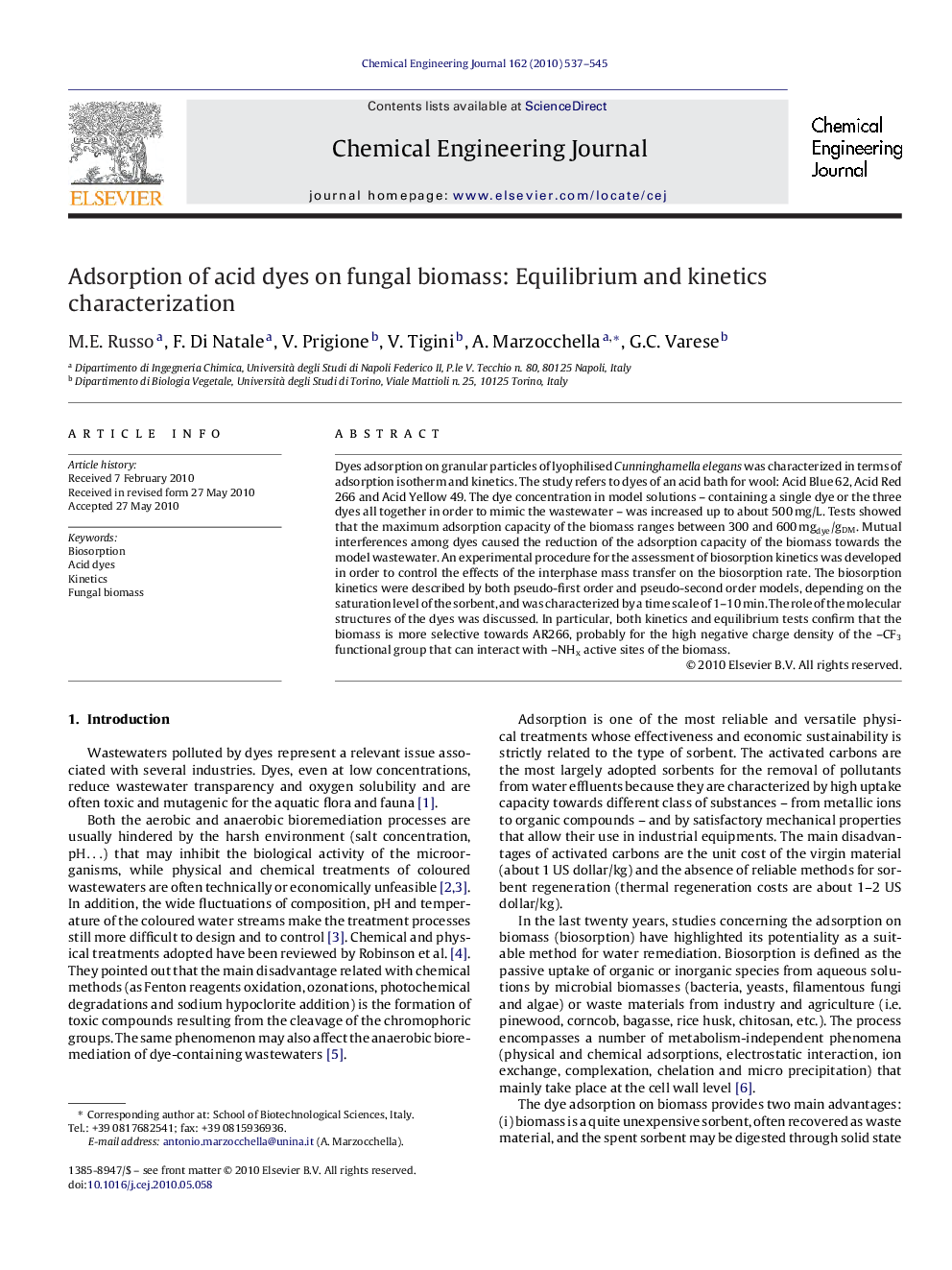| Article ID | Journal | Published Year | Pages | File Type |
|---|---|---|---|---|
| 152250 | Chemical Engineering Journal | 2010 | 9 Pages |
Dyes adsorption on granular particles of lyophilised Cunninghamella elegans was characterized in terms of adsorption isotherm and kinetics. The study refers to dyes of an acid bath for wool: Acid Blue 62, Acid Red 266 and Acid Yellow 49. The dye concentration in model solutions – containing a single dye or the three dyes all together in order to mimic the wastewater – was increased up to about 500 mg/L. Tests showed that the maximum adsorption capacity of the biomass ranges between 300 and 600 mgdye/gDM. Mutual interferences among dyes caused the reduction of the adsorption capacity of the biomass towards the model wastewater. An experimental procedure for the assessment of biosorption kinetics was developed in order to control the effects of the interphase mass transfer on the biosorption rate. The biosorption kinetics were described by both pseudo-first order and pseudo-second order models, depending on the saturation level of the sorbent, and was characterized by a time scale of 1–10 min. The role of the molecular structures of the dyes was discussed. In particular, both kinetics and equilibrium tests confirm that the biomass is more selective towards AR266, probably for the high negative charge density of the –CF3 functional group that can interact with –NHx active sites of the biomass.
